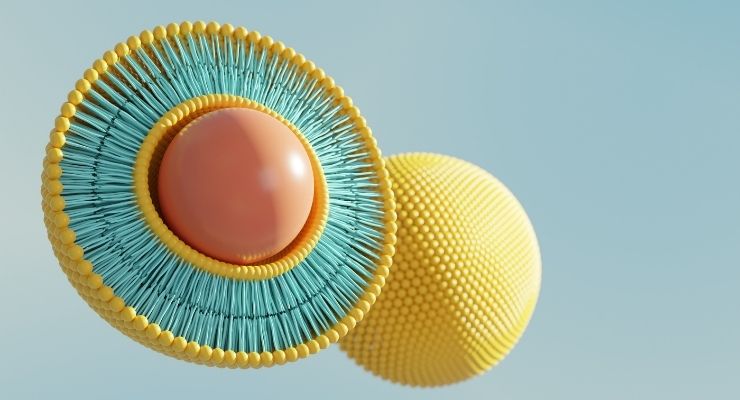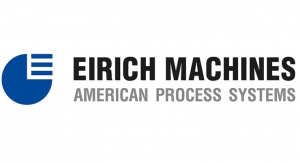Enter liposomal delivery, a groundbreaking technology that has the potential to revolutionize the supplement industry. Encapsulating active ingredients within liposomes, which are tiny lipid-based vesicles, enhances delivery absorption, improves bioavailability, and offers a host of other advantages.
Dietary Supplement Market Growth Since DSHEA
Dietary supplements are products containing one or more of the following chemical constituents: vitamins, minerals, herbs or other botanicals, amino acids, animal-derived products, hormones and hormone analogs, and enzymes, as well as concentrates, metabolites, constituents, or extracts of these. They are intended for ingestion to support health through their beneficial biological effects.Ever since the U.S. Congress passed the Dietary Supplement Health and Education Act (DSHEA) in 1994, several thousand new dietary supplement products have entered the marketplace. At the time DSHEA was enacted, however, it was estimated that 600 U.S. dietary supplement manufacturers marketed about 4,000 products. By 2000, the Food and Drug Administration (FDA) estimated there were more than 29,000 different dietary supplements available to consumers, and that an average of 1,000 new products would be introduced annually.
In 2002, sales of dietary supplements were more than $18 billion per year, with herbs/botanical supplements accounting for an estimated $4.3 billion in sales (Nutrition Business Journal). In 2022, the market soared to nearly $51 billion with more than 40,000 marketed dietary supplement products and is expected to grow at a compound annual growth rate (CAGR) of 5.7% from 2023 to 2030. At the same time, the global supplements market is worth $164 billion, and is expected to grow 9% a year through the same period.
This remarkable growth has been driven by the growing U.S. and world economies, the increasing geriatric population, the rising awareness and focus on preventive healthcare, and rising demand for sports nutrition supplements. Consumers are shifting rapidly from pharmaceuticals toward self-care and personalized nutrition, especially since the unprecedented SARS-CoV-2 pandemic (i.e., COVID-19).
To meet this fast-growing demand, dietary supplement manufacturers are striving to improve not only the variety of dietary ingredients, but more importantly, the effectiveness of these products, which are defined by their increased consumer acceptability/compliance and enhanced bioavailability.
The Evolution of Delivery
For the past two decades, great effort has been placed on creating more innovation around the delivery of dietary ingredients. In addition to traditional tablets, many other dosage forms have emerged and gained significant consumer popularity during the last several decades, such as capsules, softgels, powders, liquids, gummies, and chews. Despite the fact that these systems generally offer the same nutrient, their efficiency can vary substantially depending on how each form distributes nutrients to the body.Delivery systems like gummies, chewables, powders, and liquids are palatable and easy to swallow. Therefore, these products can be given to all age groups, especially children and elderly, who dislike or have difficulty swallowing tablets and capsules. The pleasant taste and the convenience of ingesting these products without water greatly enhances compliance. Furthermore, consumers tend to take these types of dietary supplements more regularly, which ultimately ensures improved health outcomes.
Compared to the solid forms, liquid formulations—such as liquid-filled softgels, liquid capsules, syrup, and solutions—are thought to be absorbed at a much faster rate, which in turn increases the bioavailability of the actives. However, not all liquid products are created equal.
The key parameters controlling the absorption of dietary supplement ingredients are the dissolution of the actives in the gastrointestinal (GI) tract and the permeability of the active nutrients through the GI membrane. Therefore, oral bioavailability is dependent on the actives’ aqueous solubility, stability, and permeability. So, actives that are hydrophobic, unstable, or have low permeability require high doses but have low systemic exposure, resulting in potential adverse effects and varying effects in general in individual consumers.
Take vitamins as an example. There are two groups of vitamins based on their solubility: water-soluble and fat-soluble. The biggest and most obvious difference between a water-soluble vitamin and a fat-soluble one is how they are absorbed and stored in the body.
Water-soluble vitamins (i.e., vitamin C and the eight B vitamins) dissolve in water and are readily absorbed into tissues for immediate use. Any excess is quickly passed in urine and excreted. Hence, more frequent doses are required.
Conversely, fat-soluble vitamins (i.e., vitamins A, D, E and K) are not absorbed directly into the bloodstream but are transported through the lymphatic system and then released into the bloodstream. Hence, unlike water-soluble vitamins, oil-soluble vitamins tend to accumulate in the liver and fatty (adipose) tissues where too much could lead to potential toxicity. On the other hand, patients suffering from malabsorption of lipids (such as those with pancreatic disorders) could suffer from deficiency of fat-soluble vitamins.
To address these issues, lipid-soluble vitamins are often fortified in food to meet dietary requirements. However, due to the poor aqueous solubility, these fortified products have variable bioavailability. In this case, innovative delivery systems that can enhance the bioavailability and reduce bio-variability are currently being explored.

Liposomal formulations can be designed to target specific tissues or cells within the body.
Future Nutrient Delivery: All About Liposomes
Lipid-based formulations, such as micro- and nano-emulsions, self-emulsifying drug delivery systems (SEDDS), liposomes, solid lipid nanoparticles (SLNs), and nanostructured lipid carriers, are delivery systems widely studied in the pharmaceutical arena. Among these, liposomes are the most sophisticated, known for improving the deliverability and bioavailability of various drugs.Liposomal delivery involves the encapsulation of active compounds within lipid-based vesicles called liposomes. These liposomes act as protective carriers, shielding the encapsulated ingredients from degradation in the harsh environment of the digestive system.
The liposomal structure consists of a bilayer composed of phospholipids, similar to the cell membranes found in the human body. This structural similarity enables liposomes to fuse with cell membranes, facilitating direct absorption of their contents into the bloodstream.
Traditional supplement formulations often face challenges related to poor absorption and low bioavailability. Liposomal delivery overcomes these limitations by protecting the active ingredients and facilitating their transport across cell membranes. This leads to higher absorption rates and increased bioavailability, ensuring that a greater portion of the supplement reaches its intended target.
Although liposomes were first discovered by British Hematologist Alec Bangham in 1961, it wasn’t until 1995 that FDA approved the first commercial liposomal product: Doxil (Doxorubicin HCl liposome injection). Since then, most of the approved pharmaceutical liposomal products have been injectables.
When it comes to dietary supplements, oral liposomal formulations have only started to emerge during the last decade, as quality phospholipids and reliable processing equipment have become more commercially available.
Liposomes are constructed of phospholipids, which have a lipophilic (fat-loving) and hydrophilic (water-loving) group on the same molecules. Upon interaction with aqueous media, such as water, the phospholipids arrange into cell-membrane-like lipid bilayers with their hydrophilic “heads” faced toward the aqueous medium, and their lipophilic “tails” oriented toward each other. Subsequently, these bilayers self-assemble to form spherical vesicles (i.e., liposomes).
The assembled liposomes create pockets of entrapped water along with water-soluble compounds, and the hydrophobic fatty acid bilayers host hydrophobic compounds. This unique structure enables liposomes to carry both water- and oil-soluble compounds while at the same time protecting encapsulated actives from hostile digestive conditions.
Many nutrients and bioactive compounds are vulnerable to degradation caused by stomach acid and enzymes. Liposomal delivery protects these ingredients from degradation, ensuring their stability and potency until they reach the desired absorption site. This protection helps preserve the integrity and efficacy of the supplement ingredient(s).
Liposomal formulations can also be designed to target specific tissues or cells within the body. By modifying the liposomal surface or incorporating targeting ligands, the delivery system can selectively deliver the active ingredients to the intended site of action. This approach allows for personalized supplementation strategies and optimized therapeutic outcomes.
Where to Find Liposomal Delivery Today
Liposomal delivery has been applied across various dietary supplements, enabling enhanced absorption and efficacy for a wide range of nutrients and bioactive compounds. Some examples include:Omega-3 Fatty Acids. Liposomal encapsulation of omega-3 fatty acids, such as EPA and DHA, enhances their absorption and minimizes the unpleasant fishy aftertaste associated with traditional fish oil supplements. This approach allows for lower dosages while maintaining therapeutic benefits for cardiovascular health, brain function, and inflammation management.
Antioxidants. Liposomal delivery of antioxidants, such as resveratrol and glutathione, enhances their stability and absorption. Liposomal formulations protect the antioxidants from degradation and deliver them directly to cells, promoting cellular health, reducing oxidative stress, and supporting anti-aging effects.
Herbal Extracts. Liposomal formulations can improve the bioavailability of herbal extracts, such as turmeric, milk thistle, and Ginkgo biloba. By encapsulating the active compounds, liposomes enable better absorption, maximizing the potential benefits of these extracts for various health conditions, including inflammation, liver health, and cognitive function.
Liposomal delivery represents a significant advancement in the field of dietary supplements, offering improved bioavailability, targeted delivery, and enhanced efficacy for a wide range of nutrients and bioactive compounds. By harnessing the power of liposomes, manufacturers can develop innovative formulations that optimize nutrient absorption and promote better health outcomes for consumers.
About the Author: Julia Zhang, PhD, is the Director of Pharmaceutical Technology for Aspire Pharmaceuticals, which is based in Somerset, NJ. With more than 20 years of pharmaceutical R&D experience, Zhang maintains a deep well of knowledge when it comes to various dosage forms (i.e., injectables, tablets, softgels, emulsions, nasal sprays, liposomes, etc.) for both small molecules and biologics. She has more than 10 years of softgel formulation and process development experience and has filed six formulation patent applications. She can be reached at julia.zhang@aspire-pharma.com. Visit www.aspire-pharma.com to learn more.




























